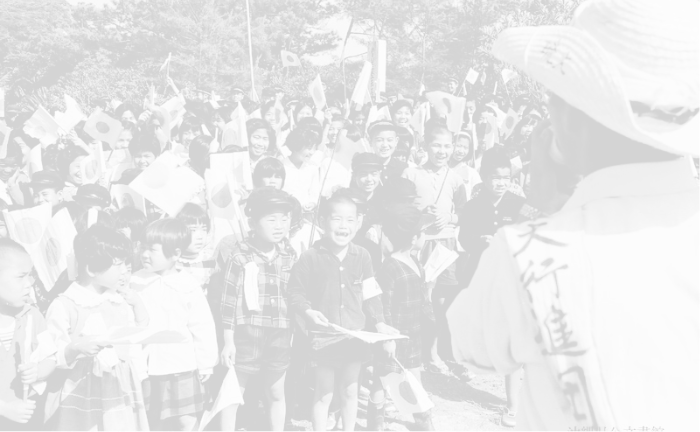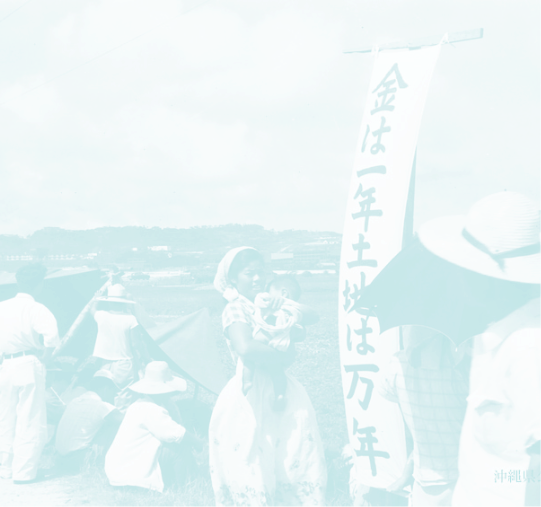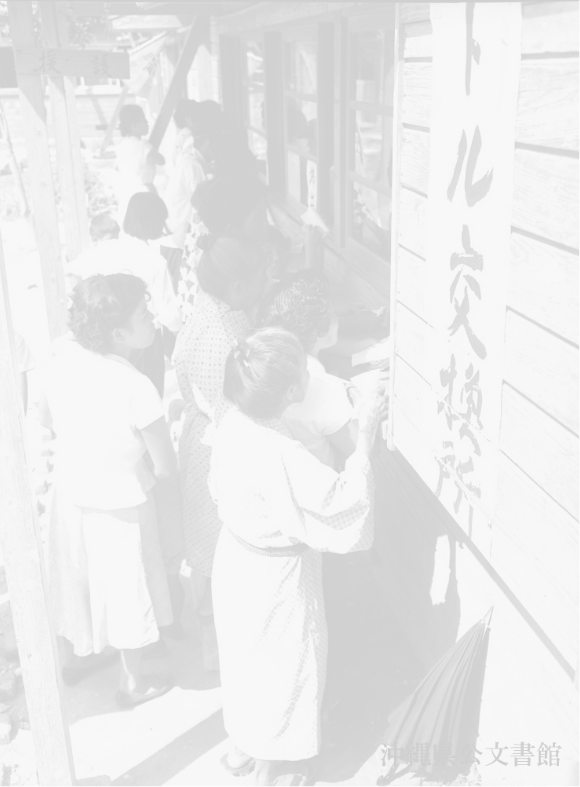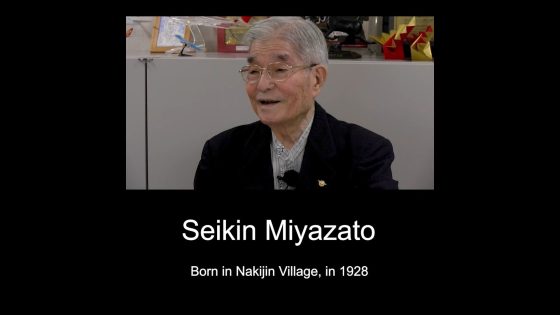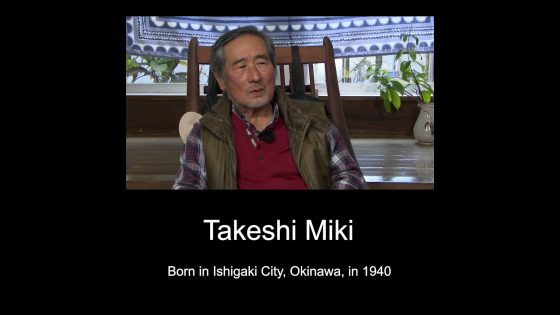
Involvement in Social Education Activities in Miyako after the War
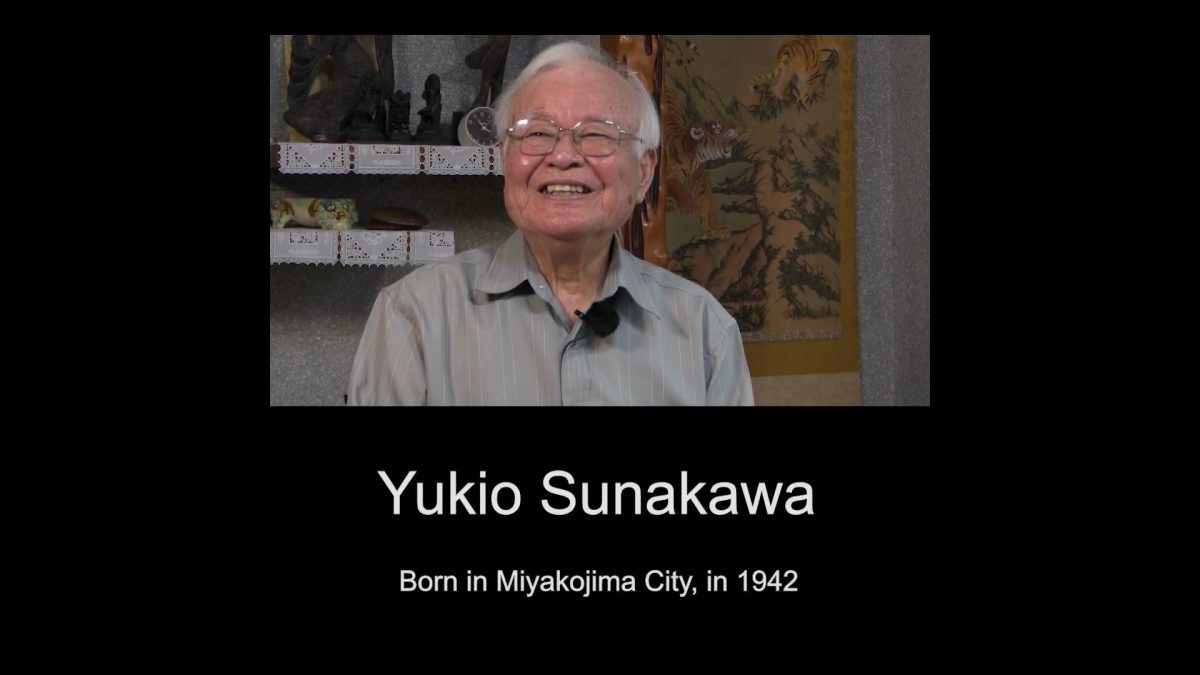

- Born in 1942
- Yukio Sunakawa
Timeline
| 1952 |
The Miyako Ryukyuan-American Cultural Center was established by United States Civil Administration of the Ryukyu Islands.
|
|
|---|---|---|
| 1961 |
The Miyako Ryukyuan-American Cultural Center was newly built in reinforced concrete.
|
|
| 1962 |
Became an employee of the Miyako Ryukyuan-American Cultural Center and engaged in library activities.
|
|
| 1966 |
Sent by the United States Civil Administration of the Ryukyu Islands (USCAR), attended a librarian course at Toyo University and was certified as a librarian.
|
|
| 1971 |
On June 30, all employees of the Ryukyuan-American Cultural Center received a notice of dismissal.
|
|
| 1973 |
Worked at the Okinawa Prefectural Library’s Miyako Branch.
|
|
|
Held local history courses at the Okinawa Prefectural Library’s Miyako Branch.
|
||
| 1975 |
Founded the Miyako local history study group and served as its executive director.
|
|
| 1978 |
Became the 6th director of the Okinawa Prefectural Library’s Miyako Branch (until 2003).
|
Story
Brief biography of the witness
Involved in library work and social education activities as a staff of the Miyako Ryukyuan-American Cultural Center. He is in charge of many projects and events such as the traveling library, story sessions, book clubs, and children's clubs.
After the reversion of Okinawa, he worked at the Okinawa Prefectural Library’s Miyako Branch as a branch manager. He helped found and served as president of the Miyako local history courses. He is an expert on cultural activities in postwar Miyako.
Activities of the Ryukyuan-American Cultural Center
About the Ryukyuan-American Cultural Center
The Ryukyuan-American Cultural Center offered library and event activities. The US civil government built five locations across the islands of Okinawa, in Naha, Ishikawa, Nago, Miyako, and Yaeyama.The Ryukyuan-American Cultural Center was created to provide social learning for adults through cultural, library, and event activities. Elementary school students, junior high school students, and high school students studied at school, and adults learned at the Cultural Center. In fact, in the US, every town and village had libraries, and cultural centers were valued as places for events and cultural activities, so the US Civil Government built the Cultural Center as a form of social education facilities in Okinawa as well.
Activities of the Miyako Ryukyuan-American Cultural Center
The Miyako Ryukyuan-American Cultural Center was open from 10:00 a.m. to 9:00 p.m. It was open seven days a week. There were 14 or 15 staff members, including the director. Activities were divided into two parts: the library department and the event department. The staff's work in the library department was mainly for books in the library, but they also traveled around the region with traveling libraries and lending libraries. The event department planned various events at the Center, like painting, calligraphy, photography, and gardening. They invited instructors, and recruited members to hold the events. There were about ten staff members at the Cultural Center, and I was in charge of about five different tasks. Usually, one person in the events department was responsible for four or five tasks. Some of the staff members had returned from studying in the US, too. These people were in charge of English classes. They did the specialized work. In addition, for painting, calligraphy, photography, and other courses, each staff member was assigned responsibilities based on their knowledge and specialties.
I was in the library department, and in charge of projects like story sessions, book clubs, and children's clubs. And the most important part of my work was the traveling libraries, going around the region, mainly community centers. I asked the director of the community center to open it up, and prepared the newspapers, magazines, and books, spreading them out to fill the venue, so that people could read them. What was most appreciated by the community was the movie screenings.TV was not as common as it is now, so everyone looked forward to the movies. Movies were mainly about American history, agriculture, technological innovations, things like that. Some people requested Japanese movies. At the time, movies were perhaps the only entertainment available to people in the rural areas. No matter how cold it was, they watched through to the end, even if they had to wrap themselves in towels. It was something they really enjoyed. Mobile libraries went to every region, because our activities spanned every region of the islands. I think the fact that movies would come made it very valuable.
Centers and Activities
The Ryukyuan-American Cultural Center was always open, and there was always something to see if people went there. If people went to the library, people could read books. English conversation classes and other events were regularly held in the classrooms. A square dance club met in the auditorium on the second floor. Young men and women would square dance to upbeat music, and they would hold “record concerts” and all kinds of other events. I think it was a great influence by incorporating the culture of the US as a developed country. For example, exhibitions of drawings, in both Japanese and English, on colorful boards. That was the sort of sight that could only be seen at the Cultural Center. The Cultural Center's focus was on art and gardening activities. Seasonal gardening exhibitions were held where people could enjoy seasonal flowers and plants.
Initiatives for Children
The Teenage Club, for middle and high school students, was handled by the events department. All staff members were in charge of the children's club, both in the events department and in the library department. I was in charge of the story time sessions at 10:00 on Sundays. Many children would gather in the auditorium at the venue. It was held every Sunday, and it was hard to prepare every time, picking a story for each week. The lecture hall was filled with people, so I had to speak loudly. There was also an early childhood classroom. When I told the daycare workers who took care of children at the community center about the early childhood classes, they gathered the children. We did some activities there. We held several events, like paper puppet theaters and story time.
Relations between the US Civil Government and the Ryukyuan-American Cultural Center
Guidance and Advice from the US Civil Government
There were two heads of the US Civil Government, Mr. Kitamura and Mr. Mukaida. They visited five Ryukyuan-American Cultural Centers, once every two months, to provide guidance to the staff. For the approaches necessary to develop cultural activities, they talked with library staff in person, asking questions like “You belong to the library department, right?” “What kind of library activities do you introduce books?” and more. And they asked a lot of questions like, “When you go shopping and meet a lot of people,” “do you do publicity like introducing books?” “Or promoting books when they come in?”
And for events, they would ask questions like, “How are you holding this event?” “Did you invite instructors?” “The instructors are the most important part of holding an event.” “You don't teach. The instructor will teach.” “So you should invite someone who specializes in that field.” “You have three-month courses, one-month courses, and six-month courses,” “and you should invite instructors to develop them.” “You don't teach. What you need to do is” “to plan and organize the events,” “and to gather people and invite instructors.” “That’s your job, and your role.” “Think about which instructors in the community specialize in each field.” “Think about that, and think a lot about inviting instructors.” “Your job is to serve as a facilitator.” The staff at the Ryukyuan-American Cultural Center were very grateful for their advice and guidance. It was helpful for me, too.
As a Specialist
The people in charge of events and libraries are all called information specialists, because they all have relationships with local residents. Mr. Kitamura told us the roles of information specialists who interact with students and instructors and formulate plans. It encouraged me to do various activities. This gave me the confidence to move forward with the local history course.
Instructors Were Volunteers
Even though various events were held at the Ryukyuan-American Cultural Center, the instructors were never paid any honorarium money. The only thing we could do was give the instructors something that the members had donated as a souvenir or as a thank-you.
Publication of Calendar of Events
The Ryukyuan-American Cultural Center published a report called the “Calendar of Events” every month. The covers were silkscreen-printed. Theming was always important. When you opened it up, there was a list of events for the month, including details like the courses and events being held. I was also in charge of making the silkscreened cover, since other staff members would be on duty in charge of the publication. I’d carve the design with a knife and print it with a silkscreen. If we published 300 copies, 300 covers needed to be printed. Publishing required skill. Since it was a monthly calendar, all of the event names were written in detail, so it was fun to look at it, but also fun to make. That was the Ryukyuan-American Cultural Center's Calendar of Events. The center director sent monthly reports to USCAR (the United States Civil Government) to report on the details of events and participants. The director and deputy director worked hard on this. The monthly report was handled by the office staff, especially the director and deputy director, and they reported to USCAR
Book Selection and Public Relations Magazines of the US Civil Government
There were five Ryukyuan-American Cultural Center locations, and the head librarian in the Naha Ryukyuan-American Cultural Center would select books. There may have been a book selection committee, but that head librarian made the final decision and selected the books. Books selected by the head librarian were sent to all the libraries at all five Ryukyuan-American Cultural Center locations. This was how it worked.
There was also a person in charge of distributing the US Civil Government's public relations magazine in the Ryukyuan-American Cultural Center. They distributed Konnichi no Ryukyu and Shurei no Hikari. These were written in English and Japanese, and were distributed mainly to community center director sat community centers in each region.
Staff Training Program
The training system was based on the US civil government basic policy, and the director and deputy director were sent to the US to study. They received training at the East–West Center in Hawaii. Library staff took librarianship courses at universities in Japan to obtain librarian certifications. I went to Tokyo on a military plane for librarian training, paid for by the US civil government. The idea seemed to be to have the staff study the policies of the US National Government and the policies of education, so that they could end up serving the local population.
Ties between the Five Centers Interacting with One Another
The directors of the five centers met in Naha and held a directors' meeting. There were also chances to meet staff from other cultural center locations. There was gatherings of people in charge of the library department and the business department.
The Role of the Miyako Ryukyuan-American Cultural Center
Introduction of American culture
The Ryukyuan-American Cultural Center was a facility introduced by the US, so we saw American styles and characteristics there. So you could see the American influence in the gardens, or in the flush toilets in the buildings, or in the classical music they played. These might have been typical of American culture, but it was also a new culture being introduced to Japan, and then to Miyako. I often heard that this center was a foothold for American pacification work. You can think of that pacification work as a good thing or as a bad thing. It’s hard to say for sure. At that time, I often heard the term “pacification work. “However, in my opinion, the role that the Miyako Ryukyuan-American Cultural Center played during those 27 years under US rule was to carry out activities for the local residents of Miyako. I think local residents also liked i.e. always said that the Miyako Ryukyuan-American Cultural Center was a place where cultural library activities, social education activities, and events took place. The site where the Cultural Center once stood is now a parking lot. The only things left from back then are the gateposts and the kuroki tree.
On the Return to Japan
Okinawa returned to Japan in May 1972.The reinstatement movement had built momentum for the previous two years. The employees of the Ryukyuan-American Cultural Center were also the employees of the US Civil Government. There was talk of what would happen to the Cultural Center staff, because they were employed by the US Civil Government. Then, on June 30, 1971, a notice of dismissal for all employees arrived.
Based on experiences to date
Based on Experiences to Date
I worked there for eight years, and learned many things at the Ryukyuan-American Cultural Center. I don’t think I have any regrets about working there. I don't know if that was part of it, but two years later, I was hired by the Okinawa Prefectural Library’s Miyako Branch. We were able to connect the events and projects we developed at the Ryukyuan-American Cultural Center to the social and library activities at the Prefectural Library’s Miyako Branch, as well as cultural activities and local history courses, and brought them to the people of the community. I think it was a good thing.
Local History Courses and the Formation of Study Groups
I worked there for eight years, and learned many things at the Ryukyuan-American Cultural Center. I don’t think I have any regrets about working there. I don't know if that was part of it, but two years later, I was hired by the Okinawa Prefectural Library’s Miyako Branch. We were able to connect the events and projects we developed at the Ryukyuan-American Cultural Center to the social and library activities at the Prefectural Library’s Miyako Branch, as well as cultural activities and local history courses, and brought them to the people of the community. I think it was a good thing. Local History Courses and the Formation of Study Groups As soon as I was hired by the library, I invited Professor Kaoru Shimoji as an instructor to teach a course on Miyako’s local history. The first local history course was very well received. The course was to be held for a year in the form of a local history study group, and we invited 12 instructors for a total of 12 sessions, and asked people to study together. Actually, from then on, I was focused on forming the Miyako Local History Study Group. And I handled the course for 12 months. We invited different instructors for each month, and held the program for 12 months. During that time, we kept working to prepare for the formation of the Miyako Local History Study Group. The chairman was Teitoku Miyaguni, the vice chairman was Shunmei Oyama, and the secretary general was Yukio Sunakawa, from the library. The steering committee included Masaji Nakasone and eight others. One year later, the Miyako Local History Study Group was formed. Even 45 years later, the Miyako Local History Study Group is still going strong. I also served as the fourth chairman.
Involvement in Social Education Activities
In the end, working at the Ryukyuan-American Cultural Center gave me the opportunity to develop social education projects and cultural activities. I don't think I would have understood what social education was unless I worked at the Ryukyuan-American Cultural Center. I can say that working at the Ryukyuan-American Cultural Center taught me what social education activities are all about.
